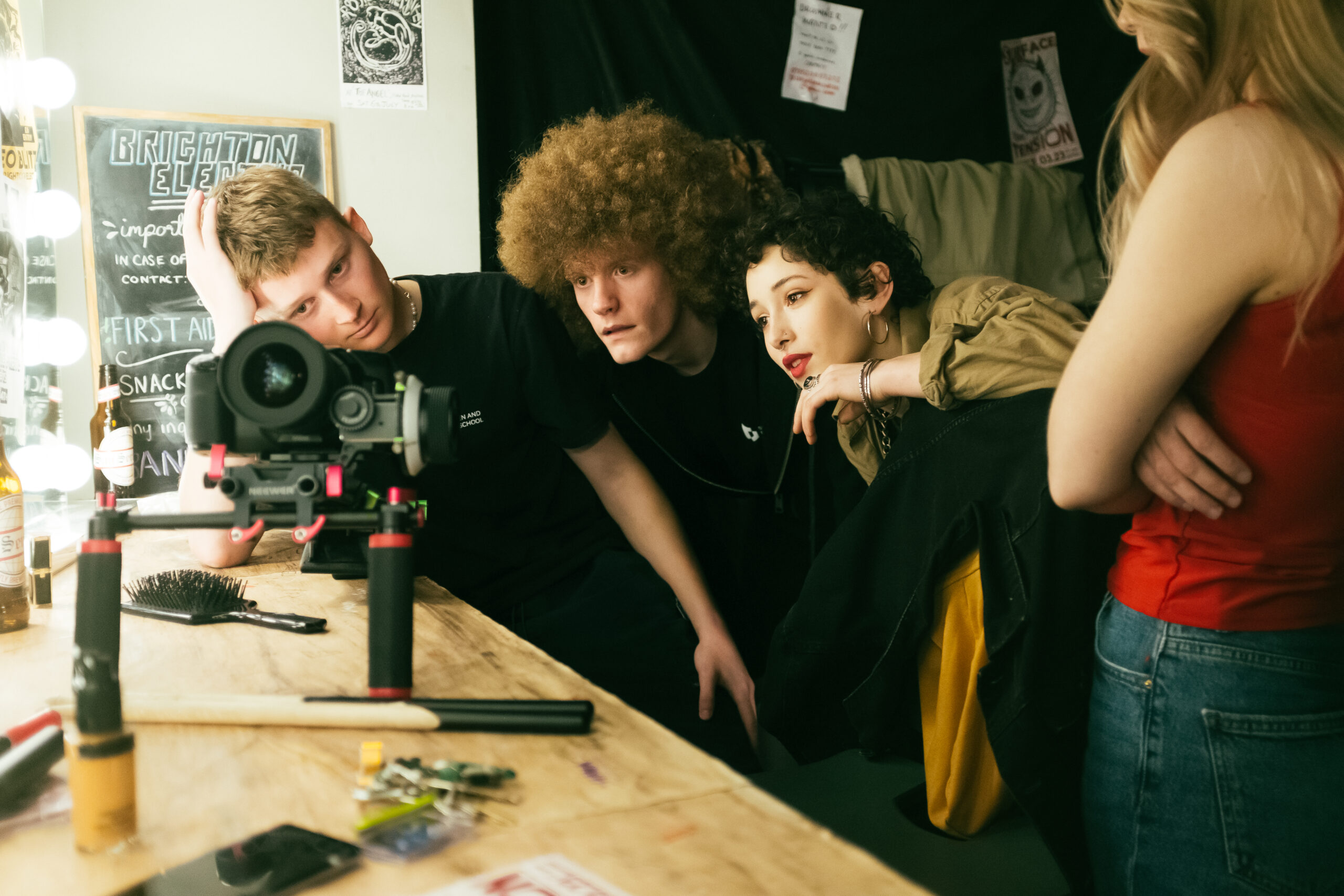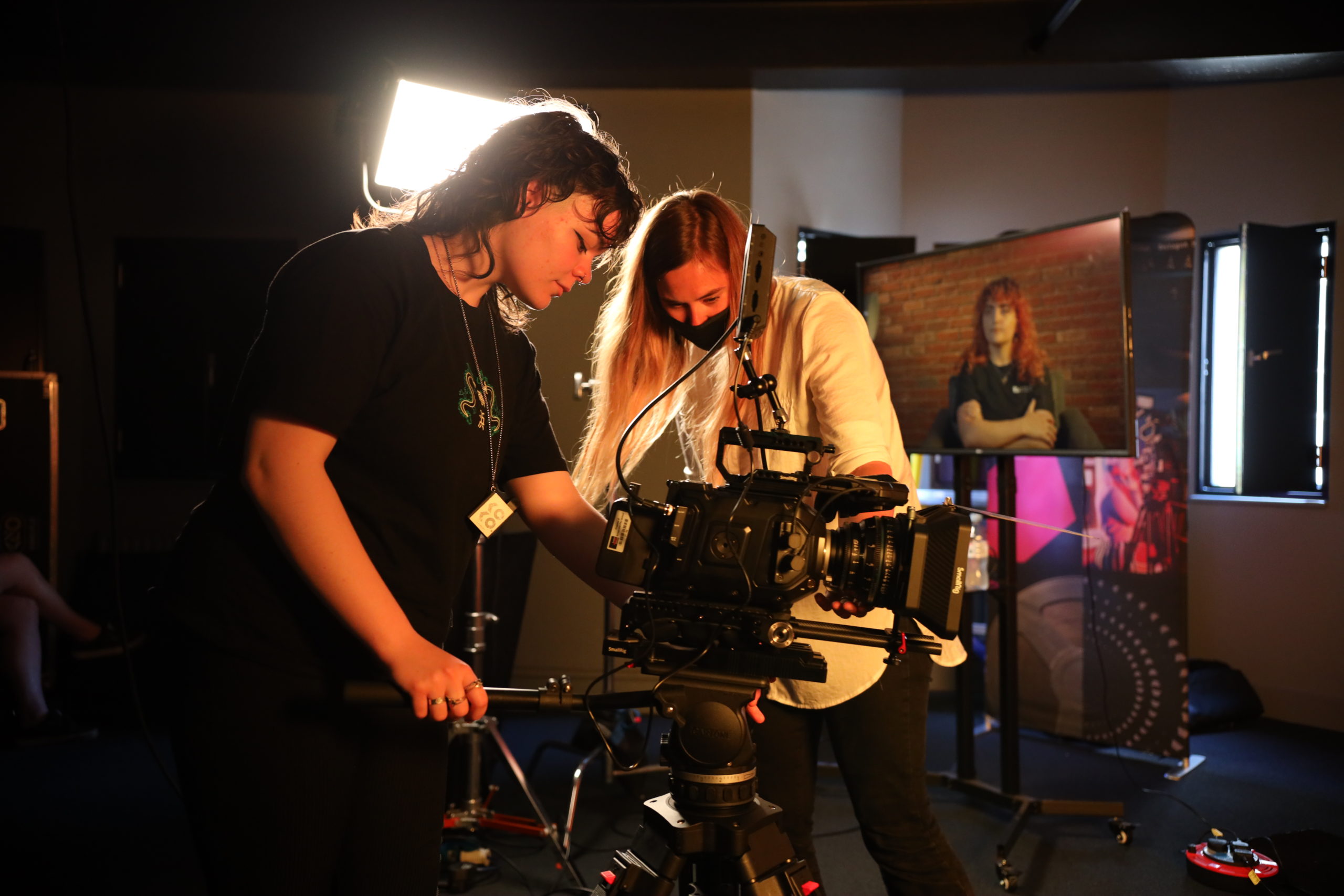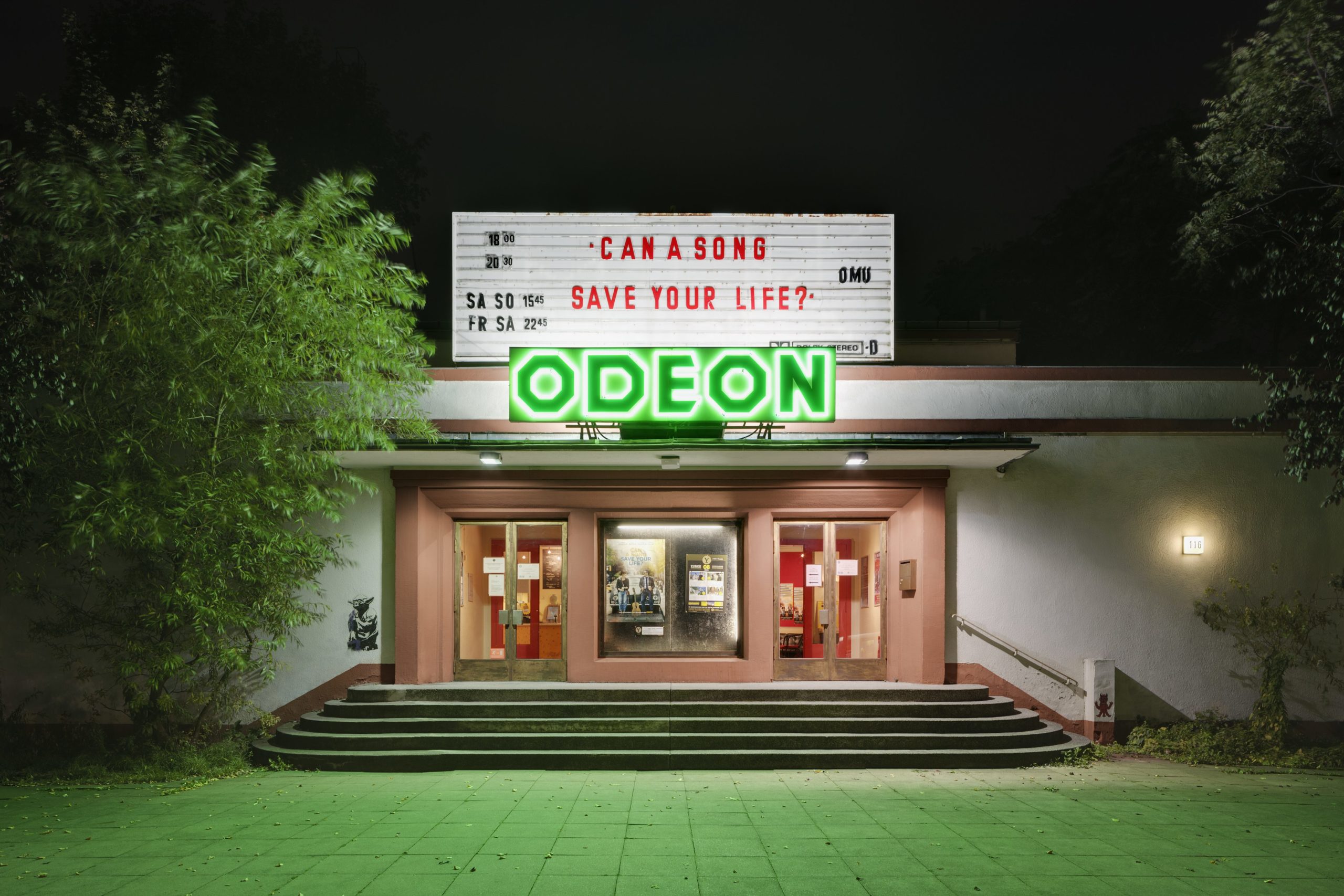Welcome to another edition of Behind the Screen, Screen and Film School’s interview series where we delve into the inspiring stories of our talented students and graduates. In each instalment, we uncover the creative paths, challenges, and triumphs that have shaped their journeys in the world of film.
This week, we had the pleasure of talking with BA (Hons) Filmmaking student, Jesse Williams, whose recent short film One More Song garnered much-deserved praise on the festival circuit. Join us as we explore Jesse’s experiences on set, and why collaborative working is so important in filmmaking!
Explore our BA (Hons) Filmmaking

Student Insight
Hi Jesse! Tell us a little bit about yourself
I’m Jesse Williams, a director studying second year BA (Hons) Filmmaking in Brighton. I’ve found a passion for writing and directing films of a range of genres, with a focus on gender, social issues and LGBTQIA+ representation.
How did the One More Song project come about?
One More Song was created as a reaction to many recent news stories of corruption and abuse of women in the creative industries. I embraced the emotions I felt seeing these headlines to write the screenplay, which we then produced as part of our Short Film 1 module.
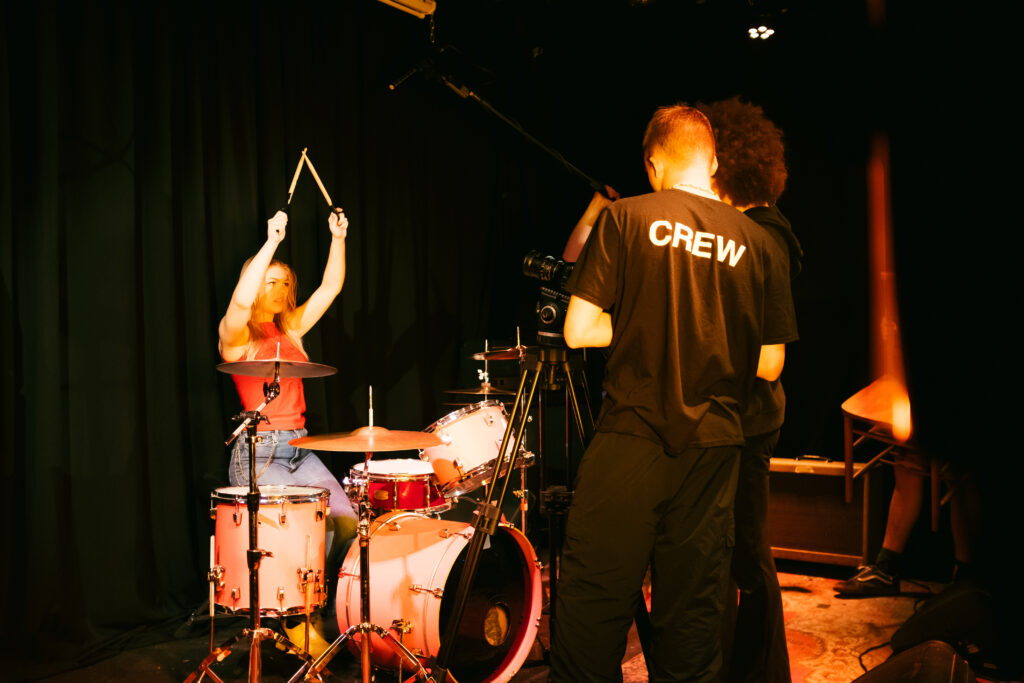
What was it like working alongside other Screen and Film School students on this project?
I was blessed with a crew that instantly understood my vision and creative voice and felt passionately about bringing it to the screen. There was no point during production at which I felt there was a weak link in the crew, nor anyone who lacked passion or creativity. While everyone acted to a highly professional standard, it is an incredibly valuable experience working with your friends, peers and classmates, and you often find your friendships help develop a creative shorthand on set!
We were lucky enough to have an art department, with students from Production Design and Hair and Makeup, which allowed us to transform the film set into a claustrophobic music venue dressing room. The attention to detail within the production design really gave us the room to navigate the space with an unchained camera, making the long-take approach to the narrative far more achievable.
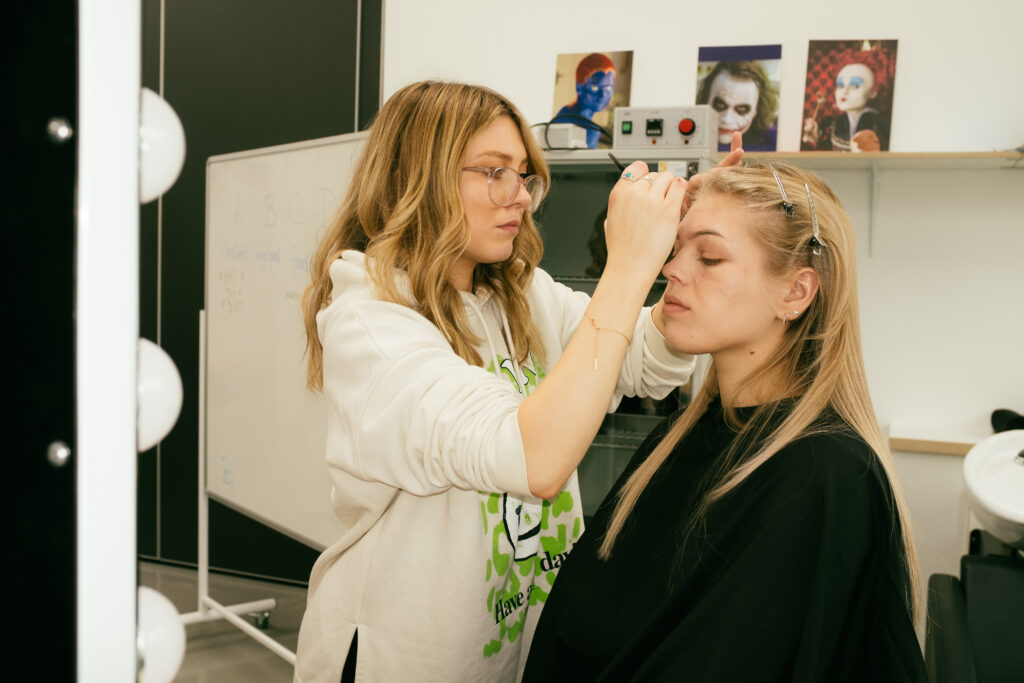
Why is collaboration so important in the creative industries?
I would argue that collaboration is the most important skill in filmmaking, due to the massive scale of the film industry. A film encompasses a vast range of careers and skill sets; even on this micro-budget, three-minute short film, we utilised a vast range of talent. The main lesson I took away from One More Song is that it is so important for directors to give their crew the room to fly. It can be tempting to over-explain or micromanage as a director, but it’s far more productive to focus on collaboration, and listen to the ideas and expertise each crew member can bring to the project. I truly believe One More Song wouldn’t have been as successful if I had not chosen to cultivate my talented crew’s ideas!
What was your favourite part of the process?
I think my favourite part of the process was the energy on set. There was a strong sense of community and camaraderie throughout the entire cast and crew. I felt everyone was on the same page creatively, meaning communication came naturally. I would credit this on-set energy to intense pre-production, getting everyone into the same creative mindset, aiming for the same creative output, and organising the shoot in precise detail.

And finally, what are your top three tips for successful collaboration?
- Communication. You can never have enough meetings. During One More Song we had two meetings a week, one for the full crew and one for the art department. Here we developed ideas, identified actions for the following weeks and engaged in table reads and script breakdowns. I felt it was important to develop a creative shorthand between the crew, and I achieved this shorthand through sharing extensive pre-vis, such as storyboards, sizzle reels, animatics, floor plans, mood boards and a breakdown of my biggest cinematic influences.
- A clear, concise timeline. My amazing producer, Niamh Young, created a Gaant chart with a firm deadline on all departments and their responsibilities. As this was easily digestible to the crew, we found departments stuck firmly to it!
- Attitude. No matter what role you have in a crew, if you enter a film without enthusiasm, you set a bad tone for everyone! People work best when excited and motivated, so creating a pleasant atmosphere on set is absolutely pivotal to a great collaboration! I found playing music that inspired the film on set created a relaxed and immersive atmosphere, and I cannot stress enough the importance of respect and manners on set!
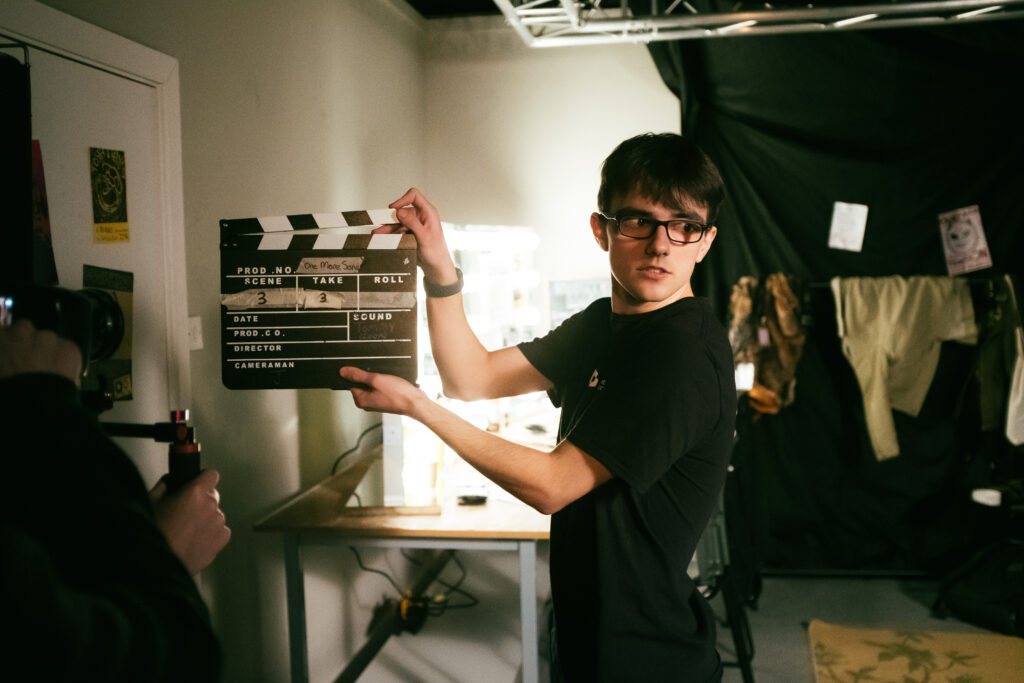
Are you interested in being a part of the new legacy of filmmakers at Screen and Film School?
Sign up to one of our Open Days:
Open Days
Find out more information on our courses by clicking below:
Our Courses
Related to Behind the Screen
- Behind the Screen: Emma Coleman, Filmmaking Top-Up Graduate
- Behind the Screen: Hana Cox, Production Design Student
- Behind the Screen: Joy Shi, MA Student
- Behind the Screen: Jasmine Kaur Gregory
- Alumni Interview: Jimmy Lobe – Sound Designer
- Alumni interview: Matt Wilkinson, Sound Recordist
- Alumni Interview: Home Picture Films
